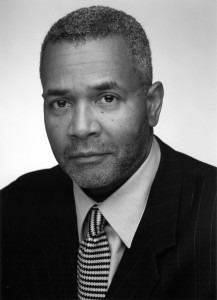Kenneth J. Knuckles, vice chair of the City Planning Commission and CEO and president of the Upper Manhattan Empowerment Zone, has worn many hats during his career; a community advocate, student of architecture, lawyer, deputy borough president, public servant, and business leader. After serving in the United States Army, Knuckles in 1968 joined the Architects’ Renewal Committee of Harlem (ARCH). The Committee pursued two principal goals: advocating for urban renewal and socialequity in Harlem, and encouraging minorities to study architecture and urban planning. As a member of ARCH, Knuckles advocated for the defeat of Columbia University’s 1968 proposal to build a massive gym in Morningside Park that would have included separate entrances for students and the Harlem community. The following year, Knuckles enrolled in the University of Michigan’s architecture program.
Knuckles eventually realized that the socio-political/planning issues he had been exposed to both at ARCH and Michigan would be better understood through a legal education. After earning a degree in architecture, Knuckles enrolled in the Howard University School of Law where he was exposed to the regulatory mechanisms that govern land use. Knuckles returned to the City and began his legal career as counsel to the Department of Personnel and later the City Civil Service Commission where he worked on disciplinary appeals. In 1985, he joined the Department of Housing Preservation and Development as an assistant commissioner under Mayor Edward Koch.
Two years later, Bronx Borough President Fernando Ferrer appointed Knuckles as deputy borough president and tasked him with leading the Borough’s effort to reinvision the South Bronx. At that time, approximately 40 percent of the City’s abandoned housing stock was concentrated in the South Bronx. Knuckles credits Mayor Koch for creating a tidal shift in housing policy when his administration invested $5 billion to improve the City’s ailing housing stock. Believing that the Bronx was well positioned for recovery, Ferrer and Knuckles fought to secure funds to revitalize and return the abandoned housing to private ownership.
Thereafter, Mayor David Dinkins appointed Knuckles commissioner of the Department of General Services. Knuckles described the agency as the City’s “quartermaster,” responsible for the City’s fleets, real estate portfolio, facilities management, and, at the time, all public building construction except for hospitals and schools. From 1996 to 2003, Knuckles served as Columbia University’s vice president of support services.
A unique perspective. Ferrer in 2000 appointed Knuckles to the City Planning Commission. In 2002, Mayor Michael Bloomberg appointed him as vice chair. Knuckles’s perspective as a planning commissioner is informed by his experience within City government. Knuckles stresses the importance of understanding the local character, context, and aspirations of a neighborhood to fully appreciate the impact of a land use action. He said that the land use review process would be “anecdotal” without visiting neighborhoods and observing, for example, the impact of a large outof- scale development on a predominantly one- and two-family neighborhood.
Knuckles noted that a major focus of the Bloomberg administration and Chair Amanda Burden has been to encourage development in central business hubs well served by transportation, while preserving the character of neighborhoods further away from transportation nodes. This goal has been implemented primarily through consensusdriven contextual rezonings coupled with the repositioning of business districts outside of Manhattan’s core, such as The Hub in the South Bronx and 125th Street in Harlem.
Kindred responsibilities. In 2003, Knuckles was named CEO and president of the Upper Manhattan Empowerment Zone Development Corporation (UMEZ). Established in 1994, the UMEZ is a local not-forprofit development corporation focused on stimulating economic development and job creation in upper Manhattan by utilizing tax incentives and public financing to attract private investment. Knuckles said that the UMEZ has played a meaningful role in the resurgence of Harlem by focusing on commercial and retail development, small business lending, and supporting Harlem’s rich cultural infrastructure. Thus far, UMEZ has invested approximately $225 million of its capital while leveraging over $900 million of private investment in the Empowerment Zone.
Knuckles described his roles with the City and the UMEZ as “kindred responsibilities” and a “productive dynamic.” He often brings a citywide and a local perspective to bear on economic development, an example being Harlem’s Special 125th Street District. Within the district’s “core subdistrict,” new developments of 60,000 sq.ft. or more must devote five percent of their floor area to qualifying arts and entertainment-related uses. For the first time, a floor area “arts” bonus will be available for providing visual and performing arts space. Knuckles believed the change will enhance one of the City’s major arts and entertainment districts. — Eugene Travers


